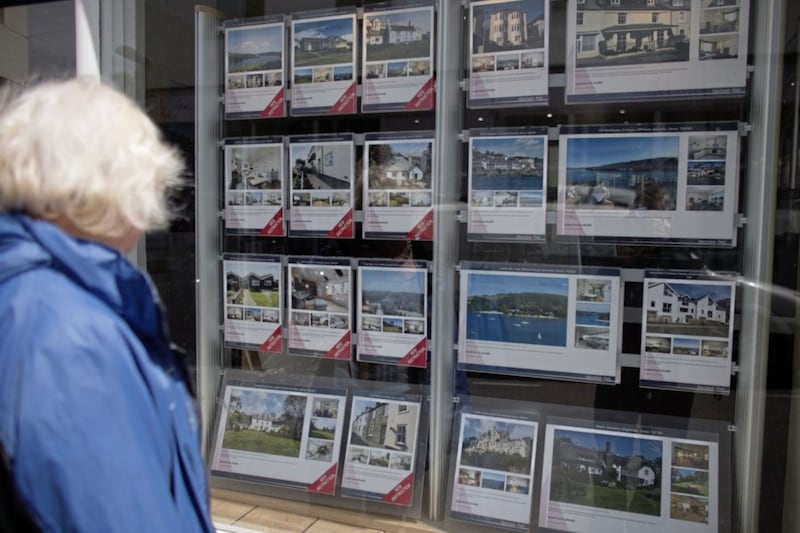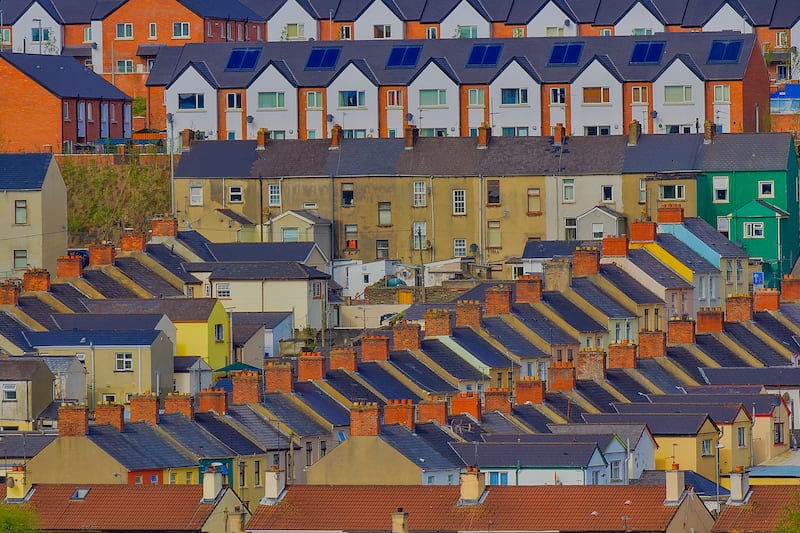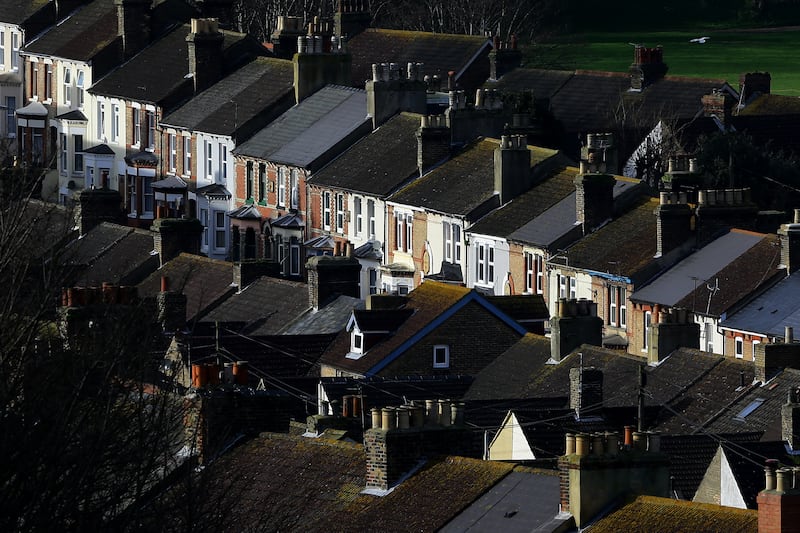THE average house price in Northern Inland fell by 1.8 per cent to £180,668 in the third quarter of 2023, according to Nationwide Building Society.
And in the UK as whole, the index showed that the average price was around £14,500 lower in September than a year earlier, amid signs that buyers are favouring smaller properties such as flats.
Average property values remained 5.3 per cent lower than a year earlier in September, Nationwide said. This was the same as the annual percentage drop recorded in August.
Nationwide recorded widespread house price falls across the UK, and at £257,808, the average UK house price in September was around £14,500 lower than a year earlier.
Some experts suggested however that the house price downturn may only have a few months left to run, amid rising wages and signs that fixed mortgage rates are easing.
Nationwide said house prices stalled month-on-month, following a 0.8 per cent monthly fall in August.
Robert Gardner, Nationwide's chief economist, said: "There are signs that more buyers are looking towards smaller, less expensive properties, with transaction volumes for flats holding up better than other property types.
"This may be because affordability for flats has held up relatively better as they experienced less of a price increase over the pandemic period."
He added: "Average prices for flats have increased by 12 per cent since the start of the pandemic - half the 24 per cent increase recorded for detached properties.
"Despite signs of demand for flats holding up a little better more recently, the price underperformance has continued in the most recent quarterly data, with flats seeing the largest year-on-year fall (minus 5.7 per cent), compared to minus 3.6 per cent for detached, minus 4.6 per cent for semi-detached and minus 5.3 per cent for terraced properties."
Mr Gardner said the relatively subdued picture is not surprising, given the more challenging picture for housing affordability.
He said: "For example, someone earning an average income and purchasing the typical first-time buyer home with a 20 per cent deposit would spend 38 per cent of their take-home pay on their monthly mortgage payment - well above the long-run average of 29 per cent.
"However, investors have marked down their expectations for the future path of (the Bank of England base rate) in recent months amid signs that underlying inflation pressures in the UK economy are finally easing, and with labour market conditions softening.
"This in turn has put downward pressure on longer-term interest rates which underpin fixed-rate mortgage pricing.
"If sustained, this will ease some of the pressure on those remortgaging or looking to buy a home."
Looking across the UK, the South West of England was identified by Nationwide as the weakest performer for house price growth in the third quarter of this year, with the average property price there falling by 6.3 per cent annually.
Northern Ireland was named as the strongest performer, with percentage price falls there being more modest than elsewhere in the UK.
The average house price in Northern Ireland fell by 1.8 per cent in the third quarter of this year compared with a year earlier.
Samuel Tombs, chief UK economist at Pantheon Macroeconomics said: "Affordability should begin to improve over the coming months, as mortgage rates respond to the recent decline in expectations for (the Bank of England base rate), and as wages continue to rise, albeit not at their recent frenetic pace.
"The pick-up in rents also will increase the share of income that (first-time buyers) are willing to devote to housing. Accordingly, the downturn in house prices probably has only a few months left to run."
Tom Bill, head of UK residential research at Knight Frank, said: "The number of people rolling off more favourable fixed-rate mortgages won't fall in 2024, but sentiment should improve as volatility reduces. We think most of the UK's house price correction will happen this year and modest single-digit annual growth will return after the next general election."
Jonathan Hopper, CEO of Garrington Property Finders, said: "Make no mistake, we are still in a very price sensitive market, but if the rate of price falls is levelling out and spiralling borrowing costs are easing, this bodes well for the market going into autumn."
Tomer Aboody, director of property lender MT Finance, said: "With the Bank of England holding rates in September, confidence may start creeping back in, especially if we there is another hold in rates at the next meeting. Mortgages are slightly cheaper, which will hopefully encourage buyers and sellers to act in the final quarter."
Graham Cox, founder of Bristol-based broker SelfEmployedMortgageHub.com said: "While September saw an increase in activity, compared to the traditionally quiet August, demand for property purchases in the South West remains weak...
"With both mortgage rates and house prices expected to be lower this time next year, the property market is in limbo."
Matt Thompson, head of sales at London-based estate agent Chestertons, said: "Since the Bank of England's announcement of interest rates remaining at 5.25 per cent for the time being, we have seen a positive response from buyers in September who felt more secure to make financial decisions and resume their property search.
"Understandably, buyers who are now entering the market are particularly careful about their budget and factor in any future rate hikes as well as the cost-of-living. As demand for properties in the capital continues to outstrip supply, the market remains competitive."
Here are average house prices in the third quarter of 2023, with the annual decrease, according to Nationwide Building Society:
- Northern Ireland, £180,668, minus 1.8 per cent
- North East, £156,051, minus 2.0 per cent
- West Midlands, £241,130, minus 2.4 per cent
- North West, £205,553, minus 3.5 per cent
- London, £514,325, minus 3.8 per cent
- Scotland, £176,814, minus 4.2 per cent
- Outer Metropolitan (includes swathes of Buckinghamshire, Hertfordshire and Surrey), £416,365, minus 4.4 per cent
- Yorkshire and the Humber, £198,030, minus 5.4 per cent
- Outer South East (includes parts of Bedfordshire, Oxfordshire and East Sussex), £334,215, minus 5.4 per cent
- Wales, £202,065, minus 5.4 per cent
- East Midlands, £228,373, minus 5.5 per cent
- East Anglia, £273,066, minus 5.6 per cent
- South West, £301,600, minus 6.3 per cent








